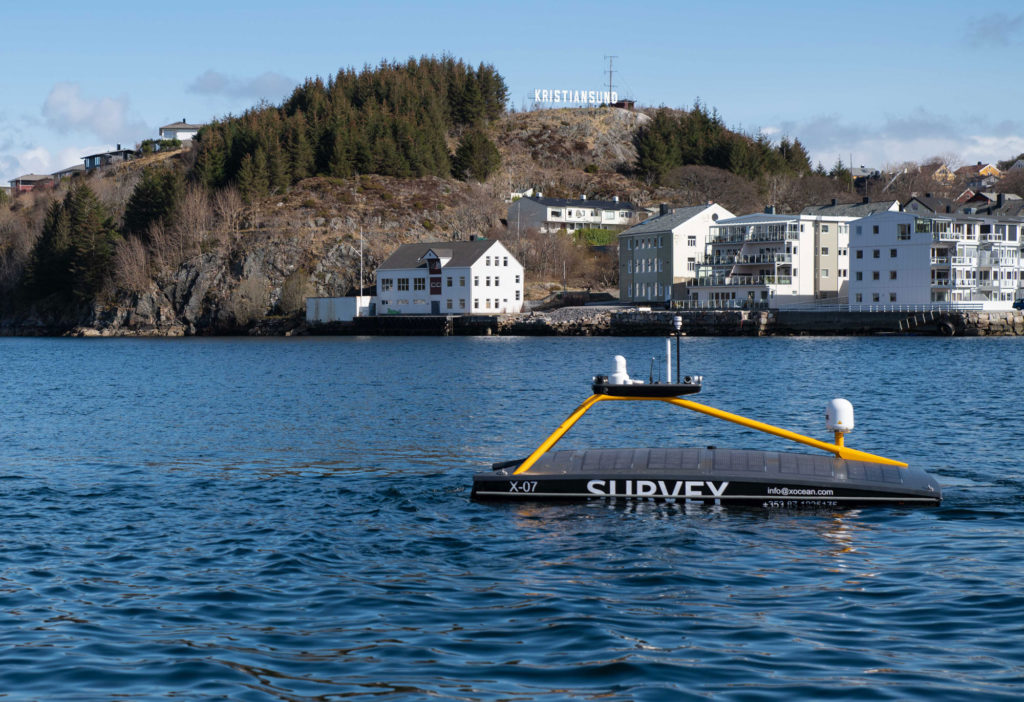Seabed-to-shore data delivery operation completed

Sonardyne International and XOCEAN have successfully completed a live seabed-to-shore data harvesting mission using an unmanned surface vessel (USV) for Norske Shell, as part of a seabed monitoring campaign at the giant Ormen Lange field offshore Norway. The project, completed early Monday (20 April) morning, without a single person having to travel offshore or from their home office, was achieved with significantly less emissions, health and safety risk and cost than could be done with a manned vessel.
By using an XOCEAN XO-450 USV to harvest data from an array Sonardyne’s long-endurance Fetch pressure monitoring transponders, an estimated 5.4t of CO2 per day was prevented from being emitted into the atmosphere, had a manned vessel had been used. XOCEAN’s USVs have a negligible carbon footprint – around 1/1000 of the emissions of a conventional vessel – and all other emissions are offset, resulting in a fully carbon neutral operation. The project, which saw the USV transit a total of 300km from Kristiansund out to the Ormen Lange field and back, over just three days, is also thought to be one of the largest data harvesting missions, using a USV, to date.
In addition, it proved the ability to support this type of operation remotely without anyone involved having to travel, safely meeting current COVID-19 movement restrictions. The vessel was ‘posted’ to Norway and then launched by local marine operations service provider, SafePath. All other team members, including Sonardyne’s remote operations specialists in the UK, XOCEAN’s USV pilots in Ireland and Shell’s geophysicists in Norway and the US, remained working from their home offices.
The Fetch PMTs were deployed in 800 – 1,100m water depth at the Ormen Lange field last September to support a long-term seabed monitoring campaign. The Fetch PMTs accurately collect pressure, temperature and inclination data at the seafloor, at pre-programmed intervals. Using this data, any vertical displacement of the seabed can be calculated. The data will help Norske Shell to proactively inform its reservoir management strategy. Sonardyne’s long-life Fetch PMTs incorporate a high-speed acoustic modem, which allows stored data to be extracted at any time, wirelessly through the water, on demand. On this mission, the XO-450 was equipped with a compatible Sonardyne acoustic transceiver attached beneath its hull.
Shaun Dunn, Sonardyne’s Global Business Manager for Exploration and Surveillance says, “We have always been big advocates of collecting data from our subsea instruments remotely using autonomous platforms. This technology is now coming of age and makes complete sense when thinking about the environment, the safety of offshore personnel and minimising cost. What’s more, thanks to the low hull and propulsion noise USVs can achieve, the data gathering is also faster, adding further to the efficiencies of this approach.” James Ives, CEO of XOCEAN adds, “Our USV platform has demonstrated itself to be a safe, reliable and ultra-low carbon solution for the collection of ocean data. We are delighted to be working with Norske Shell and Sonardyne International on this ground-breaking project.”






